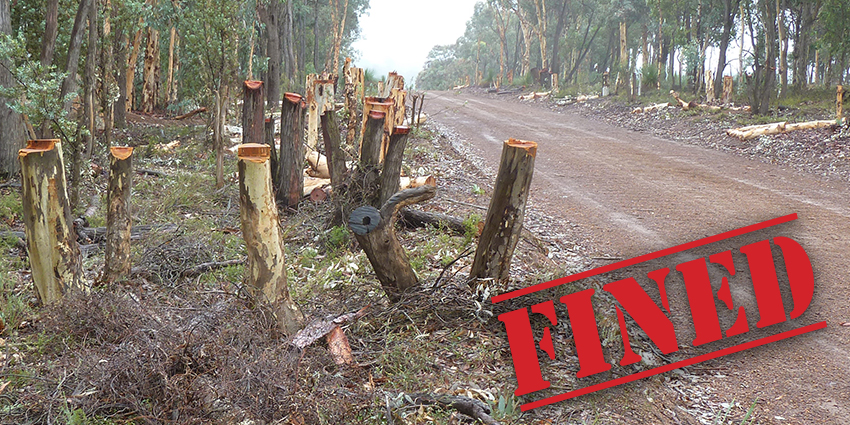
In May 2017, a contractor was engaged by the Shire to cut down and mulch trees along 2.2 kilometres of Chinganning Road, in the Shire of Northam, as part of a road works program. The Shire did not have a permit authorising clearing of the native vegetation.
The contractor cleared approximately 300 mature eucalyptus trees. The trees were later estimated to be more than 25 years old.
An assessment by the Department of Water and Environmental Regulation (the department) concluded that the trees were a foraging habitat for threatened species Carnaby's cockatoo, Baudin's cockatoo and forest red-tailed black cockatoo, and were likely to be a significant breeding habitat for the endangered black cockatoo.
It was determined that the clearing was likely to have caused a loss of flora and fauna species of conservation significance, and the Shire was charged under the Environmental Protection Act 1986.
In response to the clearing, the department issued a Vegetation Conservation Notice to the Shire in 2019 requiring the installation of nesting boxes for cockatoos.
In the Northam Magistrates Court on Monday 17 June 2024, the Shire was ordered to pay a fine of $10,000 with $788.30 costs. The maximum penalty for the offence is $500,000.
Executive Director of Assurance at the department, Ruth Dowd, said anyone planning to remove trees should check to see if permission is required.
“In this case, it appears there was a misinterpretation about what was allowed under the Act,” she said.
“Our officers can advise on what permits are required, and I’d encourage anyone planning to remove native flora, especially if it involves hundreds of trees, to check with the department first.”
“The Shire has implemented new procedures to ensure that it complies with its environmental obligations.”


